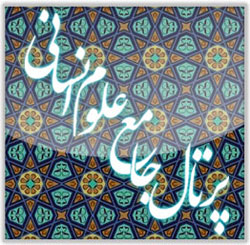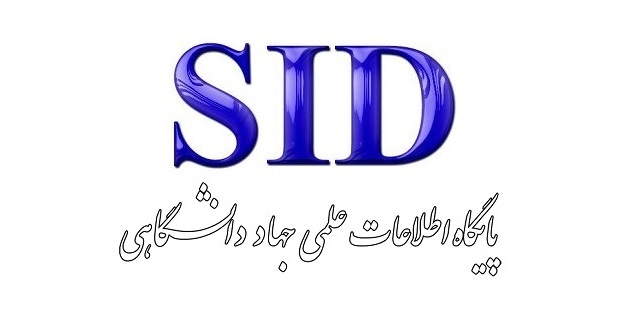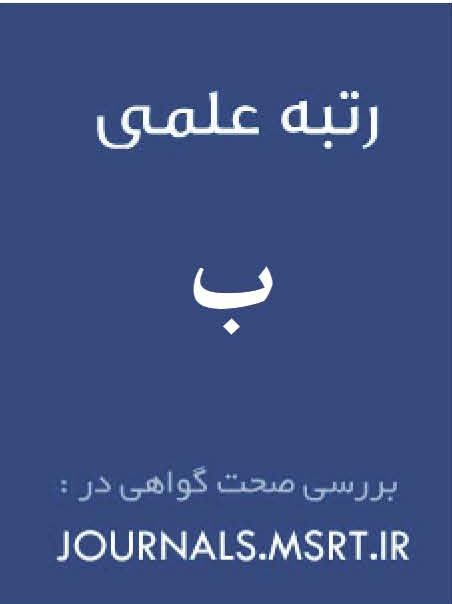Historical Semantics of the Term Mahr in the Qur'an
Keywords:
Historical semantics, mehr, QuranAbstract
Given the antiquity of the term mahr, the present study seeks to answer this key question: What semantic components did the word mahr possess in the pre-Islamic Arabian culture that led the Qur'an to avoid using it and instead employ four new terms to refer to the concept of bridal payment (dower)? To address this question, the study draws on the discipline of historical semantics in order to clarify the various semantic components of the term mahr and to enhance understanding of its lexical shift over time. Historical semantics is a method that examines the semantic changes of a word throughout history. It is first necessary to identify the earliest roots of the word through a comparative study with cognate languages, and then to trace its semantic developments step by step across different historical stages. Through adopting a historical semantic approach, it becomes possible to discern what semantic components the word carried within the cultural context of pre-Islamic Arabia. In this article, the history of the root “m-h-r” in the Arabic language is analyzed, and using the tools of historical semantics, its genealogy and historical roots are identified and studied.
Downloads
References
Ansari, M. i. M. A. (1990). Al-Makasib (The Earnings). Dar al-Dhakhair.
Anvari, H. (2003). Farhang-e Bozorg-e Sokhan (The Great Dictionary of Sokhan). Sokhan Publications.
Barru, T. (1996). Tarikh al-Arab al-Qadim (Ancient History of the Arabs). Dar al-Fikr al-Mu'asir.
Biella, J. C. (1982). Dictionary of Old South Arabic: Sabaean dialect. Scholars Press. https://doi.org/10.1163/9789004369993
Black, J. A. (2000). Concise dictionary of Akkadian. Harrassowitz Verlag.
Bolouk Bashi, A. (2006). Da'irat al-Ma'arif-e Bozorg-e Eslami (Great Islamic Encyclopedia). Center for the Great Islamic Encyclopedia.
Brun, S. (1895). Dictionarium Syriaco-Latinum. Typographia PP. Soc. Jesu.
Bussmann, H. (2006). Routledge dictionary of language and linguistics. Routledge. https://doi.org/10.4324/9780203980057
Clauson, G. (1972). An etymological Turkish dictionary. Clarendon Press.
Dalou, B. a.-D. (1989). Jazirat al-Arab Qabl al-Islam (The Arabian Peninsula before Islam). Dar al-Farabi.
Dehkhoda, A. A. (1998). Loghatnameh-ye Dehkhoda (Dehkhoda Dictionary). University of Tehran Press.
Farahidi, K. i. A. (1988). Al-Ayn (The Eye). Mu'assasat Ilmiyyah Matbou'at.
Fayoumi, A. Al-Misbah al-Munir (The Luminous Lamp). Dar al-Razi.
Firouzabadi, M. (2005). Al-Qamus al-Muhit (The Surrounding Dictionary). Mu'assasat al-Risalah.
Gesenius, W. (1939). A Hebrew and English lexicon of the Old Testament. Clarendon Press.
Herskovits, M. (1952). Economic anthropology: A study in comparative economics. Alfred A. Knopf.
Ibn Durayd, M. i. H. (1987). Jamharat al-Lughah (The Compendium of Language). Dar al-Ilm lil-Malayin.
Ibn Faris, A. (1979). Maqayis al-Lughah (Standards of Language). Dar al-Fikr.
Ibn Manzur, J. a.-D. (1993). Lisan al-Arab (The Tongue of the Arabs). Dar al-Fikr.
Jastrow, M. (1903). A dictionary of the Targumim. G. P. Putnam's Sons.
Khoei, A. Misbah al-Fiqahah.
Khomeini, R. (2006). Al-Rasa'il (The Treatises). Isma'iliyan Publications.
Lévi-Strauss, C. (1969). The elementary structures of kinship. Beacon Press.
Ma'louf, L. (2004). Al-Munjid fi al-Lughah (The Munjid in Language). Dar al-Ilal Publications.
Makarim Shirazi, N. (2001). Tafsir-e Nemouneh (The Exemplary Exegesis). Dar al-Kutub al-Islamiya.
Meshkini, A. (2013). Tafsir-e Quran-e Karim (Exegesis of the Holy Quran). The Great Quran Printing House.
Mixco, M. (2007). A glossary of historical linguistics. Edinburgh University Press.
Pakatchi, A. (2008). An Introduction to Contemporary Semantic Schools. Farhangi Research, 9(35).
Post, G. (1981). Fahras al-Kitab al-Muqaddas (Index of the Holy Bible). Maktabat al-Mash'al.
Qara'ati, M. (2004). Tafsir-e Nour (The Exegesis of Light). Lessons from the Quran Cultural Center.
Raghib Isfahani, H. (1991). Al-Mufradat fi Gharib al-Quran (The Singularities in the Strange Words of the Quran). Dar al-Ilm.
Sadeghi, M. (2010). Ahwal-e Shakhsiye-ye Ahl-e Sunnat (Personal Status of the Ahl al-Sunnah). Kharsandi.
Sanmartín, J. (2003). Dictionary of the Ugaritic language in the alphabetic tradition. Brill.
Shahidi, A. (2019). Problems of a Lack of Complete Information in the Economy. Donya-ye Eghtesad (World of Economy)(47).
Shams al-Din, M. (2002). Al-Muttali' 'ala Alfaz al-Muqni' (The Observer of the Words of Al-Muqni'). Maktabat al-Sawadi.
Stolbova, O. (1995). Hamito-Semitic etymological dictionary. Brill.
Tabibian, H. (1988). Farhang-e Larousse (Larousse Dictionary). Amir Kabir.
Tabrizi, M. H. (1963). Borhan-e Qate' (The Decisive Proof). Ibn Sina.
Tohidi, M. A. (1991). Misbah al-Fiqahah (The Lamp of Jurisprudence). Ansarian Institute.
Wolfenson, I. (1929). Tarikh al-Lughat al-Samiyyah (History of the Semitic Languages). Dar al-Qalam.
Zamakhshari. (1986). Al-Kashshaf 'an Haqa'iq al-Tanzil (The Unveiling of the Realities of Revelation). Dar al-Kitab al-Arabi.
Downloads
Published
Submitted
Revised
Accepted
Issue
Section
License
Copyright (c) 2025 Fatemeh Fathi, Soheila Parastegari, Majed Najjarian (Author)

This work is licensed under a Creative Commons Attribution-NonCommercial 4.0 International License.







